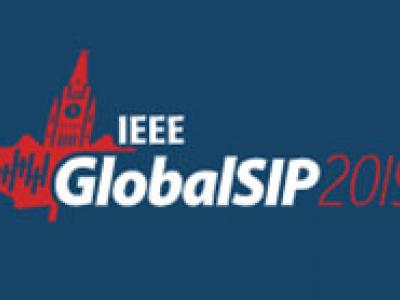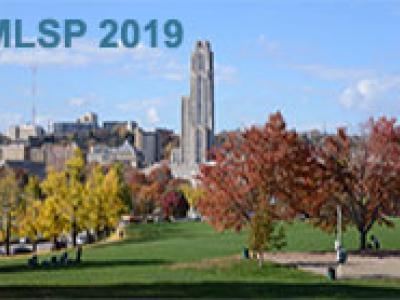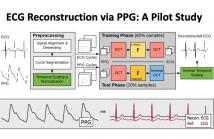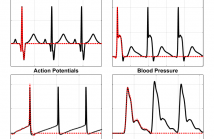
- Read more about Tensor-based Blind fMRI Source Separation Without the Gaussian Noise Assumption – A β-Divergence Approach
- Log in to post comments
- Categories:
 37 Views
37 Views
- Read more about A Bayesian Generative Model With Gaussian Process Priors For Thermomechanical Analysis Of Micro-Resonators
- Log in to post comments
Thermal analysis using resonating micro-electromechanical systems shows great promise in characterizing materials in the early stages of research. Through thermal cycles and actuation using a piezoelectric speaker, the resonant behaviour of a model drug, theophylline monohydrate, is measured across the surface whilst using a laser-Doppler vibrometer for readout. Acquired is a sequence of spectra that are strongly correlated in time, temperature and spatial location of the readout. Traditionally, each spectrum is analyzed individually to locate the resonance peak.
- Categories:
 49 Views
49 Views
- Read more about Spatially Regularized Multi-exponential Transverse Relaxation Times Estimation from Magnitude Magnetic Resonance Images Under Rician Noise
- Log in to post comments
The extraction of multi-exponential decay parameters from multi-temporal images corrupted with Rician noise and with limited time samples proves to be a challenging problem frequently encountered in clinical and food MRI studies. This work aims at proposing a method for the estimation of multiexponential transverse relaxation times from noisy magnitude MRI images. A spatially regularized Maximum-Likelihood estimator accounting for the Rician distribution of the noise is introduced.
ICIP_1976.pdf
- Categories:
 16 Views
16 Views
- Read more about DEPRESSION DETECTION BASED ON REACTION TIME AND EYE MOVEMENT
- Log in to post comments
Depression is a common mental disorder, which greatly affects the patients' daily life and work. Current depression detection relies almost exclusively on the clinical interview and structured questionnaire, consuming a lot of medical resources and risking a range of subjective biases. Our goal is to achieve a convenient and objective depression detection system, which can assist clinicians in their diagnosis of clinical depression.
- Categories:
 85 Views
85 Views
- Read more about ECG Reconstruction via PPG: A Pilot Study
- Log in to post comments
In this paper, the relation between electrocardiogram (ECG) and photoplethysmogram (PPG) signals is studied, and the waveform of ECG is inferred via the PPG signals. In order to address this inverse problem, a transform is proposed to map the discrete cosine transform (DCT) coefficients of each PPG cycle to those of the corresponding ECG cycle. The resulting DCT coefficients of the ECG cycle are inversely transformed to obtain the reconstructed ECG waveform. The proposed method is evaluated on a benchmark dataset of subjects with a variety of combinations of age and weight.
- Categories:
 551 Views
551 Views
- Read more about BEAMFORMER DESIGN UNDER TIME-CORRELATED INTERFERENCE AND ONLINE IMPLEMENTATION: BRAIN-ACTIVITY RECONSTRUCTION FROM EEG
- Log in to post comments
- Categories:
 26 Views
26 Views
- Read more about Diving Deep onto Discriminative Ensemble of Histological Hashing & Class-Specific Manifold Learning for Multi-class Breast Carcinoma Taxonomy
- Log in to post comments
Histopathological images (HI) encrypt resolution dependent heterogeneous textures & diverse color distribution variability, manifesting in micro-structural surface tissue convolutions & inherently high coherency of cancerous cells posing significant challenges to breast cancer (BC) multi-classification.
- Categories:
 316 Views
316 Views
- Read more about DEEP LEARNING THE EEG MANIFOLD FOR PHONOLOGICAL CATEGORIZATION FROM ACTIVE THOUGHTS
- Log in to post comments
Speech-related Brain Computer Interfaces (BCI) aim primarily at finding an alternative vocal communication pathway for
people with speaking disabilities. As a step towards full decoding of imagined speech from active thoughts, we present a
BCI system for subject-independent classification of phonological categories exploiting a novel deep learning based
- Categories:
 11 Views
11 Views
Modern medical science demands sophisticated signal representation methods in order to cope with the increasing amount of data. Important criteria for these methods are mainly low computational and storage costs, whereas the underlying mathematical model should still be interpretable and meaningful for the data analyst. One of the most promising models fulfilling these criteria is based on Hermite functions, however having some important limitations for specific biomedical wave shapes.
- Categories:
 50 Views
50 Views